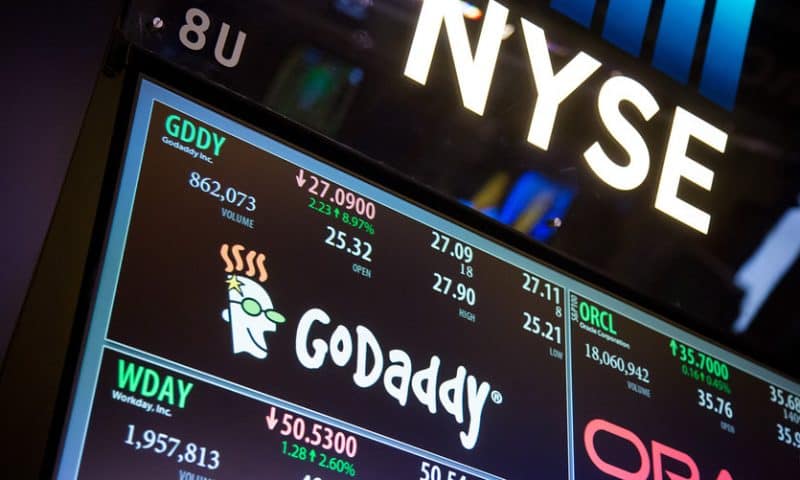Aman Bhutani unveils new website-building software for small businesses
It’s been a bumpy stock ride since Aman Bhutani took over as GoDaddy Inc. chief executive less than two weeks ago.
Shares of the internet-domain registrar and web-hosting company have tumbled 10% since Scott Wagner announced his retirement in August due to health reasons. Shares rose 0.7% in regular trading Tuesday after GoDaddy GDDY, +0.68% announced in San Francisco a new software product that helps small businesses build websites with a suite of marketing tools.
GoDaddy also benefited from the buzz of two special guests: New company pitchwoman Ayesha Curry and her husband, Stephen, the two-time MVP of the NBA’s Golden State Warriors. The power couple launched a new website for their “Eat. Learn. Play” community foundation for low-income families, built from GoDaddy’s new software.
“We want to make building websites for small businesses simpler, simpler, simpler, because a large percentage of them do not have a website,” Bhutani said in his first interview since officially taking over as CEO on Sept. 4. He joined GoDaddy from Expedia Group Inc. EXPE, +1.07%, where as president he once reported to Dara Khosrowshahi, who is now CEO of Uber Technologies Inc. UBER, -0.41% . It takes as little as an hour for small businesses to build websites from GoDaddy’s new product, he said.
If only CEO succession plans went so smoothly.
Bhutani assumed the reins in the midst of the Trump administration’s tariff war with China and a slump in the market — not to mention momentary uncertainty over the surprise resignation of Wagner, who oversaw a surge in the company’s fortunes. “Yeah, you can say a lot was going on at the time,” Bhutani said, laughing.
From mid-2017 to mid-2018, after Wagner succeeded Blake Irving, GoDaddy’s stock catapulted 56%, as the company reached 18 million paying customers and revenue topped $2.5 billion. In an interview then, Wagner predicted bigger things: Nearly 25 million paying customers and about $5 billion in revenue by 2023.
Things have cooled appreciably since, however.
The Scottsdale, Ariz.-based company reported non-GAAP earnings of 61 cents per share for its second-quarter results in August, missing the FactSet consensus estimate of 79 cents. Revenue improved 13% year-over-year to $737.2 million, edging FactSet’s estimate of $735.5 million.
The company expects revenue between $2.97 billion and $3 billion, up 12% to 13% year-over-year.
“Scott had a good plan in place, and we will continue the same strategy,” Bhutani said. “We think alike. At our town hall (in August), we finished each others’ sentences.”
Despite its quarterly hiccup, the company continues to grow internationally in the U.K., Canada, Australia, India and elsewhere. Case in point: In 2012, about 2 million of GoDaddy’s 10 million small-business customers, about 20%, came from outside the U.S.; this year, about 8 million of its 19 million customers, or 42%, are non-U.S.
More than 1 million of them are in India, where, despite massive infrastructure obstacles, GoDaddy has established a growing customer base.
At the same time, the company feels immune to fears of declines in IT spending, as cautioned by Cisco Systems Inc. CSCO, -1.10% and HP Inc. HPQ, +0.00% in recent earnings calls. “Our customer base couldn’t be more different,” Bhutani said. “Small businesses are our life blood.”

